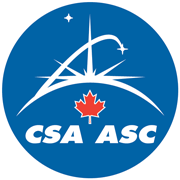HD-03: Recent Results on the Use of Information Theory in Image Understanding
Renato J. Cintra
Abstract:
The classical concepts of divergence and entropy have been recently generalized in the literature to the broad class of h-phi divergences and entropies. Such measures can be manipulated to exhibit good statistical properties; in particular, tests statistics with known asymptotic distributions can be derived. Many issues remain when dealing with such measures in practical problems, among them: how to derive these quantities, which divergence or entropy is the best suited for the problem at hand, and how to use the measure. Synthetic Aperture Radar (SAR) sensors with full polarimetric capability are able to produce images rich in information content. Both processing and analyzing this kind of images, known as PolSAR imagery, require the use of specialized models and techniques: each observation is a Hermitian matrix. The multilook scaled complex Wishart distribution (MSCW) is widely accepted as a good model for PolSAR data. This tutorial presents new results applying h-phi divergences and entropies to PolSAR data. These results are theoretically well-founded (we present analytic expressions), computationally sound (we discuss the computational complexity of each procedure), and they lead to contrast measures, classification and segmentation procedures, edge detection algorithms and speckle reduction filters which excel many state-of-the-art approaches. Special attention is devoted to speckle reduction techniques for both intensity and polarimetric formats. Moreover, the proposed tutorial emphasizes the application of the discussed techniques in other fields of research.
Biography:
Renato J. Cintra (IEEE Senior Member) earned his doctorate in Electrical Engineering from Universidade Federal de Pernambuco (UFPE), Brazil, in 2005, being a predoctoral fellow at the University of Calgary, AB, Canada. In 2005, he joined the Department of Statistics at UFPE. He is also a faculty member of the Department of Electrical and Computer Engineering, University of Akron, OH. His long-term topics of research include theory and methods for digital signal processing, communications systems, and applied mathematics.

